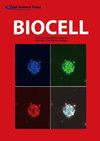Molecular mechanisms and cellular process in signal transduction pathway related to air pollutants in obstructive lung diseases: A mini-review
IF 1
4区 生物学
Q4 BIOLOGY
引用次数: 0
Abstract
Exposure to air pollutants such as PM10, PM2.5, PM0.1, O3, CO, NO2, and SO2, and biological pollutants are important factors causing the evolution and furtherance of obstructive lung diseases (OLD), including asthma and chronic obstructive pulmonary disease (COPD). Asthma is the most frequent chronic inflammatory airway disease, characterized by breathlessness, wheezing, chest tightness, and cough, together with the presence of exaggerated expiratory airflow fluctuation that varies over time. COPD is a heterogeneous lung condition characterized by chronic respiratory symptoms such as dyspnea, cough, expectoration, and/or exacerbations due to abnormalities of the airways and/or alveoli that cause persistent, often progressive, airflow obstruction. Understanding the molecular mechanisms and cellular processes based on the development of OLD on exposure to air pollutants will provide insights into the solution of pathogenesis, prevention, and treatment of these conditions. The molecular mechanisms and cellular process involved in signal transduction pathway plays a role in the binding of extracellular signaling molecules and ligands to receptors placed on the cell surface or on the inner side cell that trigger inflammation that occurs, especially when something important enters the cell to bring into a cascade response. This binding then alters the cell metabolism, shape, and gene expression in the airway. This review aimed to reveal the effect of air pollutants on the molecular mechanisms and cellular processes involved in the signal transduction pathways in OLD.阻塞性肺疾病中空气污染物信号转导通路的分子机制和细胞过程综述
PM10、PM2.5、PM0.1、O3、CO、NO2、SO2等空气污染物以及生物污染物的暴露是导致哮喘、慢性阻塞性肺疾病(COPD)等阻塞性肺疾病(OLD)演变和加重的重要因素。哮喘是最常见的慢性炎症性气道疾病,其特征为呼吸困难、喘息、胸闷和咳嗽,并伴有随时间变化的呼气气流波动过大。慢性阻塞性肺病是一种异质性肺部疾病,其特征是慢性呼吸系统症状,如呼吸困难、咳嗽、咳痰和/或气道和/或肺泡异常引起的恶化,导致持续的、通常是进行性的气流阻塞。了解暴露于空气污染物的OLD的分子机制和细胞过程,将为解决这些疾病的发病机制、预防和治疗提供见解。信号转导通路所涉及的分子机制和细胞过程,是细胞外信号分子和配体与细胞表面或细胞内侧的受体结合,从而引发炎症发生,特别是当重要物质进入细胞引起级联反应时。这种结合改变了气道内的细胞代谢、形状和基因表达。本文旨在揭示空气污染物对老年痴呆症信号转导途径的分子机制和细胞过程的影响。
本文章由计算机程序翻译,如有差异,请以英文原文为准。
求助全文
约1分钟内获得全文
求助全文
来源期刊

Biocell
生物-生物学
CiteScore
1.50
自引率
16.70%
发文量
259
审稿时长
>12 weeks
期刊介绍:
BIOCELL welcomes Research articles and Review papers on structure, function and macromolecular organization of cells and cell components, focusing on cellular dynamics, motility and differentiation, particularly if related to cellular biochemistry, molecular biology, immunology, neurobiology, and on the suborganismal and organismal aspects of Vertebrate Reproduction and Development, Invertebrate Biology and Plant Biology.
 求助内容:
求助内容: 应助结果提醒方式:
应助结果提醒方式:


